

| Rearing Cryptocephalus fulvus in captivity | ||
| Found quite commonly
by sweeping St John's Wort at most of the former colliery
sites we visit, Cryptocephalus fulvus is easily
obtained. Captive breeding and pot production is as for
all other Cryptocephalus species we are
currently rearing. The newly produced pots are very small, certainly as small as Cryptocephalus labiatus, measuring just 0.5mm from end to end at maximum. Much lighter in colour, this may be due to the females preferred diet of St John's Wort flowers, rather than the leaves. Typically, the pots are slightly blunted at one end by the female and the surface texture consists of a series of twists from right to left up the pot. The pots below were photographed the day they were produced on July 24th 2011. |
||
| .... | ||
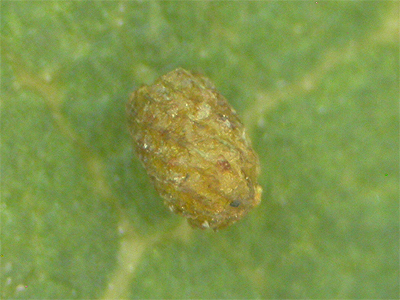 |
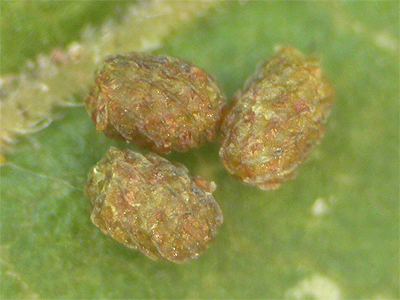 |
|
| .... | ||
| Hatching of the first pots produced commenced on August 7th, a total of around 14 days which seems typical of most Cryptocephalus species. As with all our Cryptocephalus larvae, they were kept at warm room temperature and development has been good during these initial stages. As can be seen from the photographs below, the pots have already been enlarged and split lengthways along the underside. Similarly to C. moraei, C. fulvus larvae seem to do well feeding on the flower heads and developing seed cases of St John's Wort, with fresh dung used to fill the slit being distinctively orange. Pot length about 1mm. | ||
| .... | ||
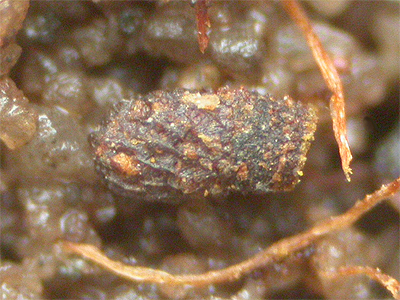 |
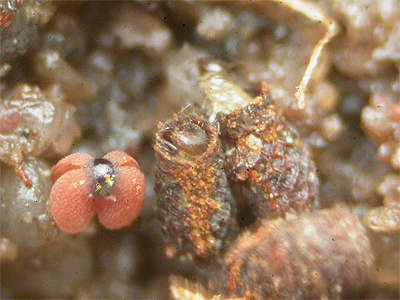 |
|
| .... | ||
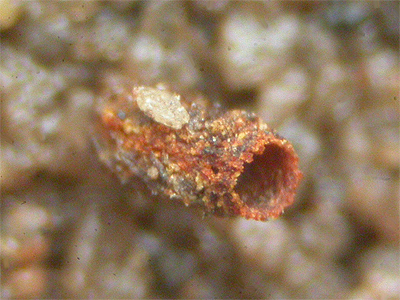 |
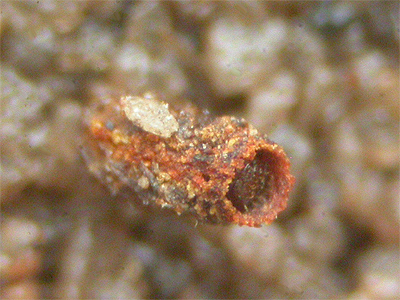 |
|
| Larval growth has seemed slow, but by the middle of September the pots now range in length from between 3 - 4mm and have lost the orange colouration around the collar, with fewer flowers in their diet. They remain tucked well into the developing seed heads of the foodplant, in much the same way as Cryptocephalus moraei larvae, but will hide in cracks within the substrate when not feeding. | ||
| .... | ||
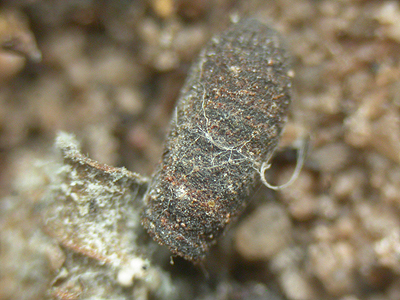 |
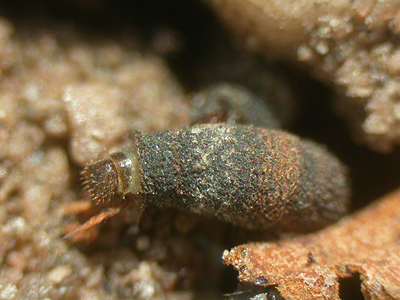 |
|
| .... | ||
| Photographed in mid-October, the young larvae have remained relatively dormant over recent weeks or months (as have all the species we are rearing) and have largely stopped feeding. Now being fed on dried foodplant remaining from the last fresh supply, some growth is still evident and shown in the upper two of the next four photographs. All the pots checked remain open ended, with no immediate sign of the entrance being closed for the Winter. There also appears to have been some enlarging of some of the pots, as can be seen in the upper right photograph. | ||
| .... | ||
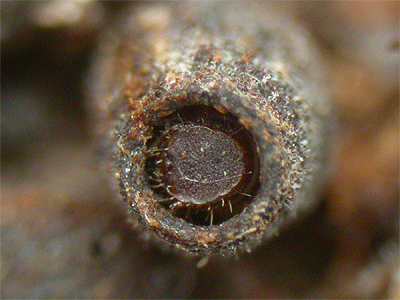 |
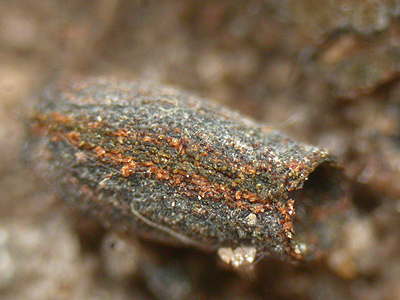 |
|
| .... | ||
| Many C. fulvus pots remain attached to the foodplant or in cracks within the substrate. This is likely to be replicated in the wild, when over-wintering. C. moraei behaves similarly. | ||
| .... | ||
 |
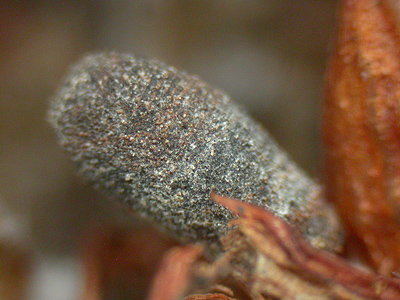 |
|
| .... | ||
| In early January 2012, the container and pots were moved outside and kept in a wooden coal bunker to give them some direct protection from the elements. Indoors the substrate had remained very dry, but was sprayed with water just before going outside and then again in mid-February. The first snow of the Winter led to some extremely cold temperatures of around -11°C on several nights, so the pots were brought back indoors and kept for a week in the kitchen. There was no sign of any larval activity, but when placed in the sun on a pleasantly warm late February morning, they almost instantly became active. | ||
| .... | ||
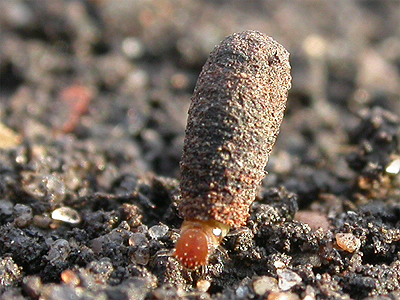 |
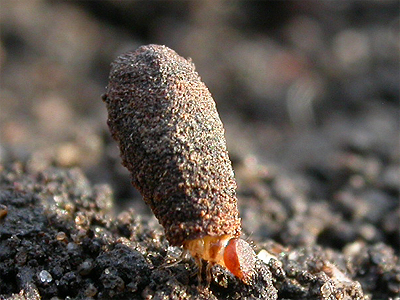 |
|
| .... | ||
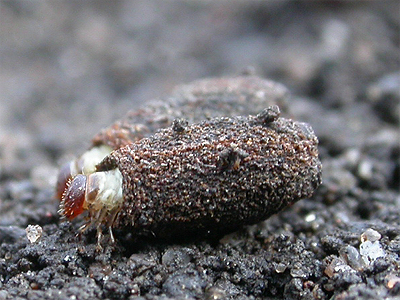 |
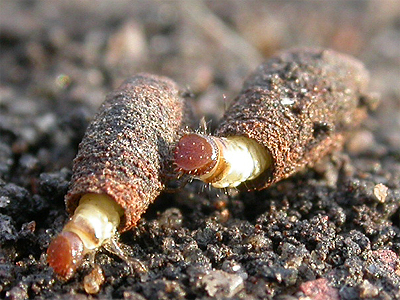 |
|
| .... | ||
| It seems that
a high percentage of the larvae have successfully
over-wintered, despite us fearing that we had kept them
too dry during rearing, but we were completely amazed to
find a newly emerged adult on February 26th. The exited
pot was located near the adult, so some Cryptocephalus
fulvus, must pass the Winter as un-hatched adults,
depending upon growth made during the late Summer. Most
of the remaining larva are near full grown, though some
pots are still less than 3mm long. In typical Cryptocephalus manner, the pot entrance had been sealed off and the adult emerged out the other end. This exit hole is shown on the empty pot below, complete with newly emerged adult. In captivity, the whole process from egg to adult for this beetle, had taken seven months, but with some larvae still only half grown, a year from egg to adult in the wild seems probable. |
||
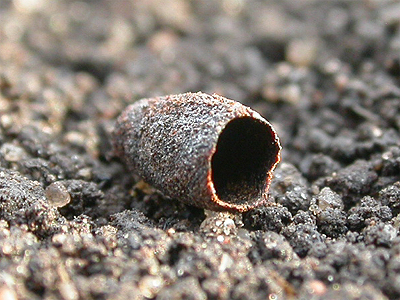 |
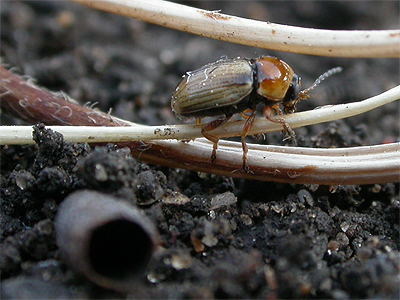 |
|